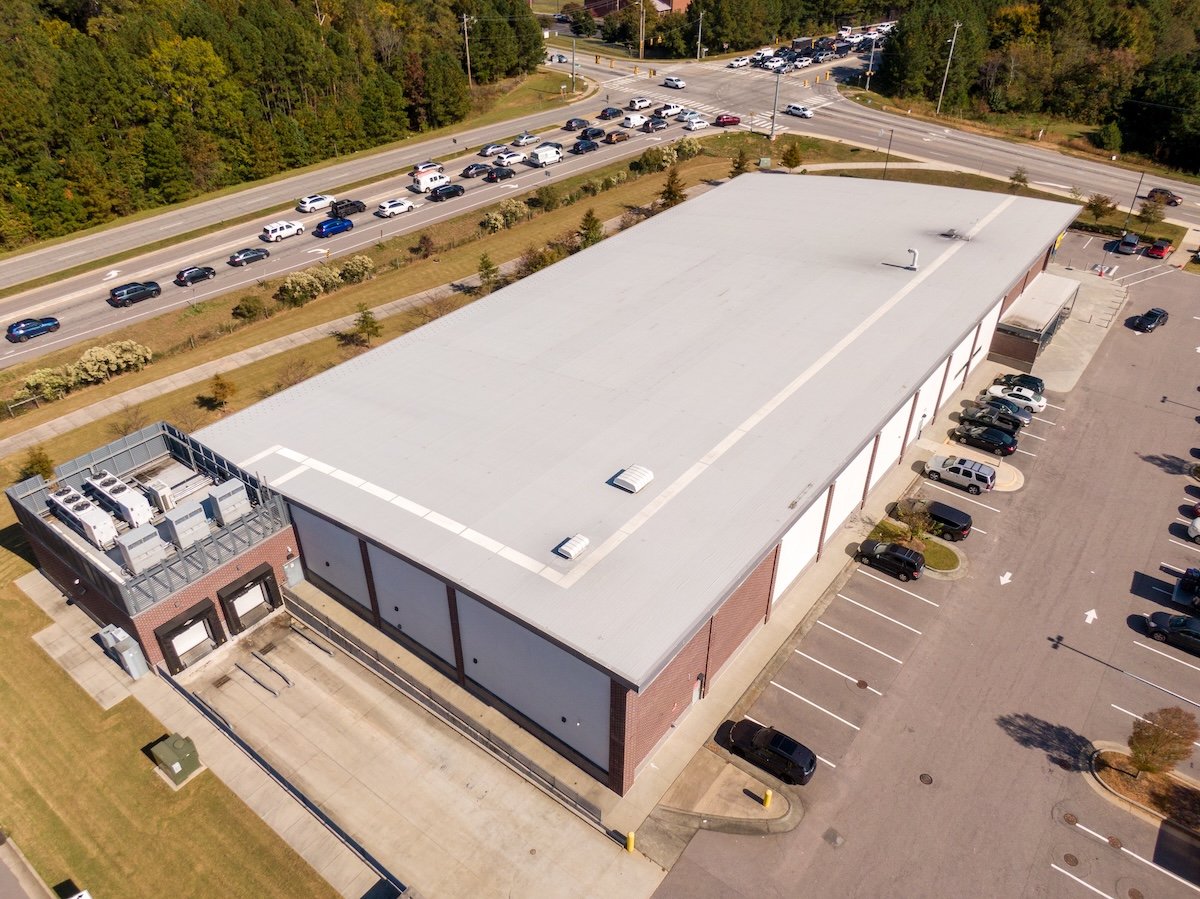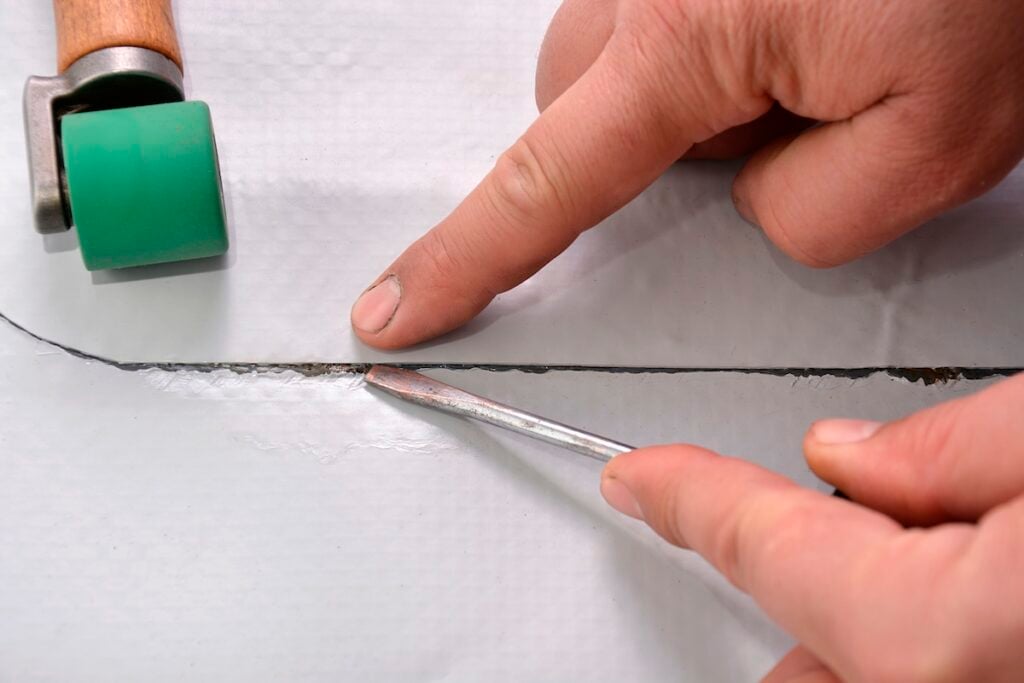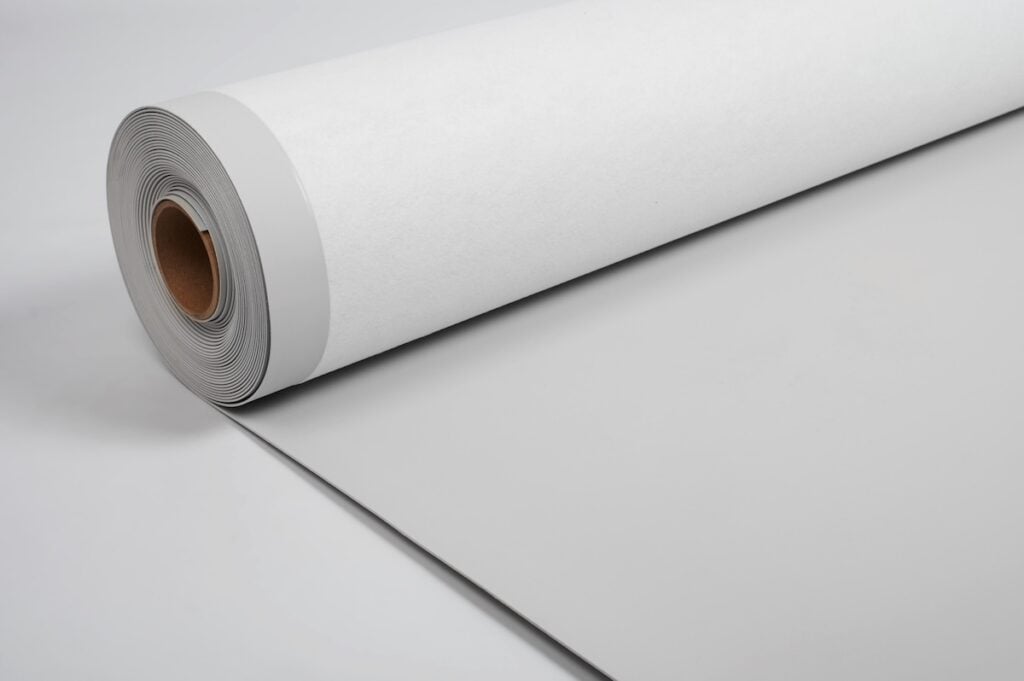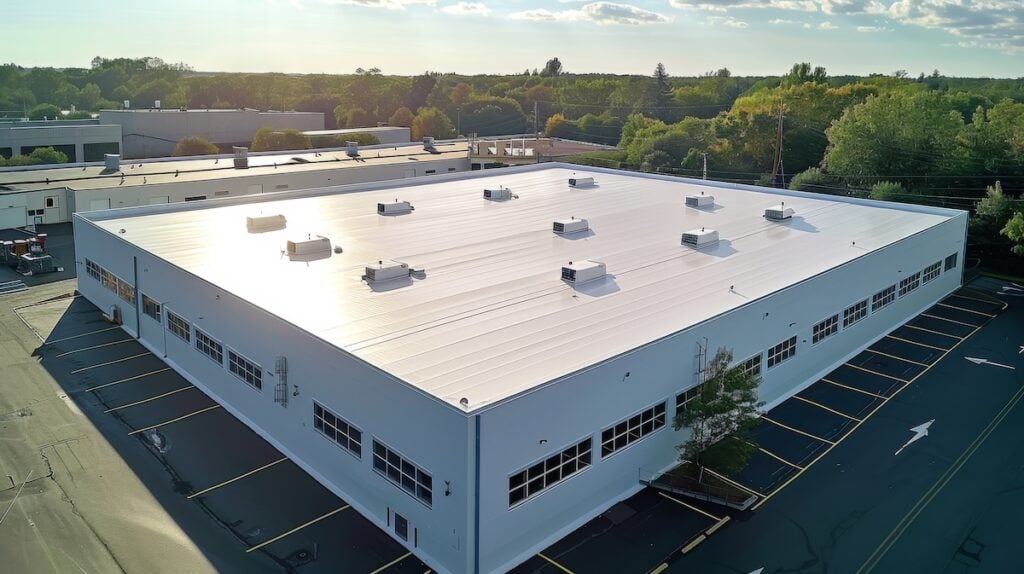
Flat Roof Replacement: 7 Steps, Materials & More
7/23/25
6 Min Read
Flat roof replacement is a major investment for property owners, but it’s also one of the most effective ways to protect your building from leaks, water pooling, and structural damage. Whether you own a commercial property or a large residential structure with a flat or low-slope roof, knowing the steps, materials, and options available can help you make a smarter decision.
- Step-by-step process: Understanding each stage of replacement prevents surprises.
- Material options: Different flat roofing systems come with unique pros and cons.
- Long-term investment: Choosing the right roof means better performance and lower maintenance.
Let’s walk through what you need to know about flat roof replacement so you can plan with confidence.
🤔 Why Flat Roofs Need Replacement
Flat roofs are exposed to years of sun, rain, snow, and temperature swings. Over time, even the strongest systems break down, leading to leaks, standing water, or structural concerns. Replacement becomes necessary when repairs are no longer cost-effective or when the existing roof has reached the end of its lifespan.

✅ 7 Key Steps in the Flat Roof Replacement Process
When you know what to expect, a flat roof replacement project feels much more manageable. Here’s how the process typically unfolds:
- Initial inspection: A roofing contractor examines your roof’s condition, identifies problem areas, and determines whether replacement is necessary.
- Tear-off or overlay decision: Depending on the structure, you may fully remove the old roof or install a new system over the existing one.
- Surface preparation: Contractors clean and prepare the roof deck, replacing damaged wood or insulation as needed.
- Installation of insulation: High-quality insulation improves energy efficiency and extends the roof’s performance.
- Membrane installation: A new flat roofing system (such as TPO, EPDM, or modified bitumen) is installed, either adhered, mechanically fastened, or heat-welded.
- Flashing and detail work: Edges, penetrations, and seams are sealed to prevent water intrusion.
- Final inspection: The contractor ensures the roof is properly installed and ready to protect your property.
🪵 Common Flat Roofing Materials
Choosing the right material is one of the most important parts of a flat roof replacement. Each system has different strengths depending on your goals and budget.

TPO Roofing
TPO (Thermoplastic Polyolefin) is a single-ply roofing membrane that has quickly become one of the most popular options for flat roof replacement. It is known for its affordability, energy efficiency, and solid performance in a wide range of climates. TPO membranes are typically white, which gives them reflective properties that help lower cooling costs by bouncing sunlight away from the building. This makes them especially beneficial for property owners looking to reduce energy expenses in the summer months. In addition to being cost-effective, TPO is also resistant to punctures, dirt buildup, and mold growth, giving it a practical edge for both commercial and residential applications. When installed correctly, TPO provides a watertight, durable surface that performs well for 15–25 years.
EPDM Roofing
EPDM (Ethylene Propylene Diene Monomer) is a synthetic rubber roofing membrane that has been widely used for decades. It is highly valued for its long lifespan, with properly maintained EPDM roofs lasting 25 years or more. This material is extremely resistant to harsh weather conditions, including strong winds, hail, and freezing temperatures, making it a great choice for Ohio’s unpredictable climate. EPDM is available in both black and white options, allowing property owners to choose between better heat absorption or greater energy efficiency. It also comes in large rolls, which means fewer seams and less risk of leaks when properly installed. For larger flat roofs, EPDM is particularly cost-effective because of its wide coverage and low installation costs compared to other systems.
Modified Bitumen
Modified bitumen roofing is a time-tested option that blends traditional asphalt roofing with modern polymer technology for improved flexibility and strength. It is typically installed in multiple layers, which provides excellent waterproofing and durability. One of the biggest advantages of modified bitumen is its ability to handle heavy foot traffic, making it a strong choice for commercial buildings where rooftop access is common. It also performs well in extreme weather conditions, as its layered design provides resistance against cracking, splitting, and water penetration. Modified bitumen can be applied in different ways, including torch-applied, cold-applied, or self-adhered, giving contractors flexibility based on the building’s needs. For property owners who want a proven system that balances durability and cost, modified bitumen remains a reliable option.
PVC Roofing
PVC (Polyvinyl Chloride) roofing is another single-ply membrane, but it stands out for its superior chemical resistance, long lifespan, and ability to handle demanding environments. Unlike TPO, which is newer to the market, PVC has decades of proven performance, often lasting 25–30 years with proper care. It is highly resistant to chemicals, oils, and industrial byproducts, making it a preferred choice for restaurants, factories, and other commercial buildings where rooftop contaminants may be present. PVC also has strong heat-welded seams that create a watertight barrier, ensuring excellent leak protection. While the upfront cost of PVC is typically higher than other flat roof systems, the added durability, energy efficiency, and low maintenance needs often justify the investment. For commercial property owners looking for a premium, long-term solution, PVC roofing is one of the most dependable options available.
⚠️ Signs It’s Time for Flat Roof Replacement
Not sure if repair or replacement is the right call? Watch for these signs that a new roof may be necessary:
- Frequent leaks: Repeated repairs are often more costly than replacement.
- Pooling water: Standing water indicates poor drainage and structural concerns.
- Visible cracks or blisters: These signal membrane failure and vulnerability to leaks.
- Age of the roof: Most flat roofing systems last 15–25 years before replacement is required.
Benefits of Replacing a Flat Roof
Replacing your flat roof isn’t just about fixing problems—it can also bring long-term advantages for your property.

- Improved Energy Efficiency: Modern flat roofing materials often come with reflective surfaces and upgraded insulation, helping you save on heating and cooling costs year-round.
- Enhanced Property Value: A new roof increases the value of your property by improving its condition, appearance, and long-term protection.
- Lower Maintenance Costs: With a brand-new system in place, you’ll spend less money on frequent repairs, giving you predictable maintenance for years to come.
👉 Choosing the Right Roofing Contractor
Flat roof replacement is a precise process that requires an experienced contractor. Poor installation can lead to leaks, shortened lifespan, and wasted investment. Look for a roofing company that specializes in flat roof systems, offers clear estimates, and backs their work with strong warranties.
⏳ Is It Time for a Flat Roof Replacement?
Flat roof replacement is a big project, but it’s one of the smartest investments you can make to protect your property. By understanding the steps, choosing the right materials, and working with a trusted contractor, you’ll ensure your new roof lasts for decades.
At Buckeye State Roofing, we specialize in flat roof replacement for both residential and commercial properties across Ohio. Our expert team uses top-quality materials and proven installation methods to deliver lasting performance. If your flat roof is showing signs of age or damage, contact us today for a free estimate and personalized recommendations.
